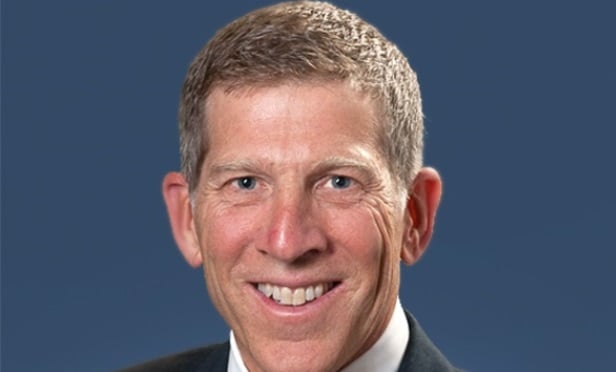SAN FRANCISCO—Asian investors are on track to spend more on US multifamily assets in 2014 than at any other point in history, according to the latest research from CBRE. Since January 2013, Asian buyers have targeted a range of multifamily assets in US locations, with San Francisco attracting the most investment at more than $326 million, followed by Los Angeles at $252 million and New York at $175 million, according to the firm.
US multifamily has seen a significant increase in investment volumes by Asian buyers so far in 2014, with $522 million of transactions completed from January through August. This figure has already surpassed the full year total for 2012 ($356 million) by a considerable margin and is close to bettering the 2013 total ($537 million), CBRE sys.
The jump in buying activity by Asian investors, particularly from Japan and China, is the most significant shift in terms of buyer nationality in 2014. Asian investors are now responsible for 18% of cross-regional multifamily investment in the US—an increase of 8%—as purchases by European and Middle Eastern countries decline slightly. Canada continues to be the overall leader in foreign multifamily investment into the US.
Asian investors have been focused on single assets with just one of the 27 multifamily acquisitions in this time period a portfolio, compared to investors from the rest of the world who made at least 20% of their acquisitions in portfolio assets, CBRE says.
Peter Donovan, senior managing director of multifamily at CBRE says that “Asian investors are attracted to markets where fellow nationals are likely to live, and to US metropolitan areas that closely mirror the investment conditions found in major Asian cities such as Beijing or Hong Kong. This makes densely populated urban centers such as San Francisco, Los Angeles and New York obvious choices.”
He adds that “Investors are also considering multifamily opportunities in markets such as Seattle, Salt Lake City, Jacksonville, and South Florida where the strategy is generally to target areas surrounding universities or other enclaves that attract a disproportionate number of Chinese nationals, whom developers believe can be enticed as potential tenants or investment buyers of condo units.”
Marc Giuffrida, executive director of CBRE Global Capital Markets points out that “Residential is a well understood asset class in Asia and we are seeing strong interest in US markets from China, Japan, and Hong Kong. The relative performance and availability of multifamily assets in the US compared to home markets is extremely attractive to investors. This can be seen in the diversity and depth of the capital looking to allocate into multifamily. Asian capital may not be making the biggest trades at this time, but there is solid interest, particularly in the lower lot sizes where private wealth can play.”
Cross-border buyers overall have targeted a range of multifamily assets in US locations since January 2013, with two Texas metros ranked in the top three of investment destinations. Houston attracted the biggest concentration of cross-border investment at more than $758 million, followed by Washington, DC at $703 million and Dallas at $649 million.
The majority of cross-border multifamily investment to date in 2014 has been made in primary and secondary metros. This is in contrast to 2013 when secondary and tertiary metro acquisitions dominated the first eight months of the year (40% in Texas metros). Cross-border investors have preferred purchasing newly built core/core-plus product in 2014, compared to a significantly greater focus on slightly older core-plus/value-add product in 2013.
And according to another source, JMBM, we are in the early stages of a tectonic shift in Asian investment that is being felt around the world but particularly in California. “China's global importance has skyrocketed over the past few years, and China will have replaced the US as the largest economy in the world by December 2014. The impact of Chinese expansion is disproportionately great in Los Angeles and Orange Counties and in the Bay Area in California,” the firm says.
According to Jim Butler, chairman of the global hospitality group and Chinese investment group with JMBM, “We see interesting situations developing for both China-based investors in the US and for US-based companies who may advise, sell properties or otherwise partner with or serve the US-bound Chinese and Asian investors.”
He adds, “The Chinese investors of today are much shrewder than only a year or two ago and will become increasingly active and important over the next 10 years. They have learned that the most experienced advisors are essential to avoid traps and mistakes some of their predecessors made. These investors increasingly are the largest banks, construction companies, insurance companies and pension funds in the world, with virtually unlimited resources who find US real estate and technologies to be very cheap.”
Continue Reading for Free
Register and gain access to:
- Breaking commercial real estate news and analysis, on-site and via our newsletters and custom alerts
- Educational webcasts, white papers, and ebooks from industry thought leaders
- Critical coverage of the property casualty insurance and financial advisory markets on our other ALM sites, PropertyCasualty360 and ThinkAdvisor
Already have an account? Sign In Now
© 2024 ALM Global, LLC, All Rights Reserved. Request academic re-use from www.copyright.com. All other uses, submit a request to [email protected]. For more information visit Asset & Logo Licensing.








